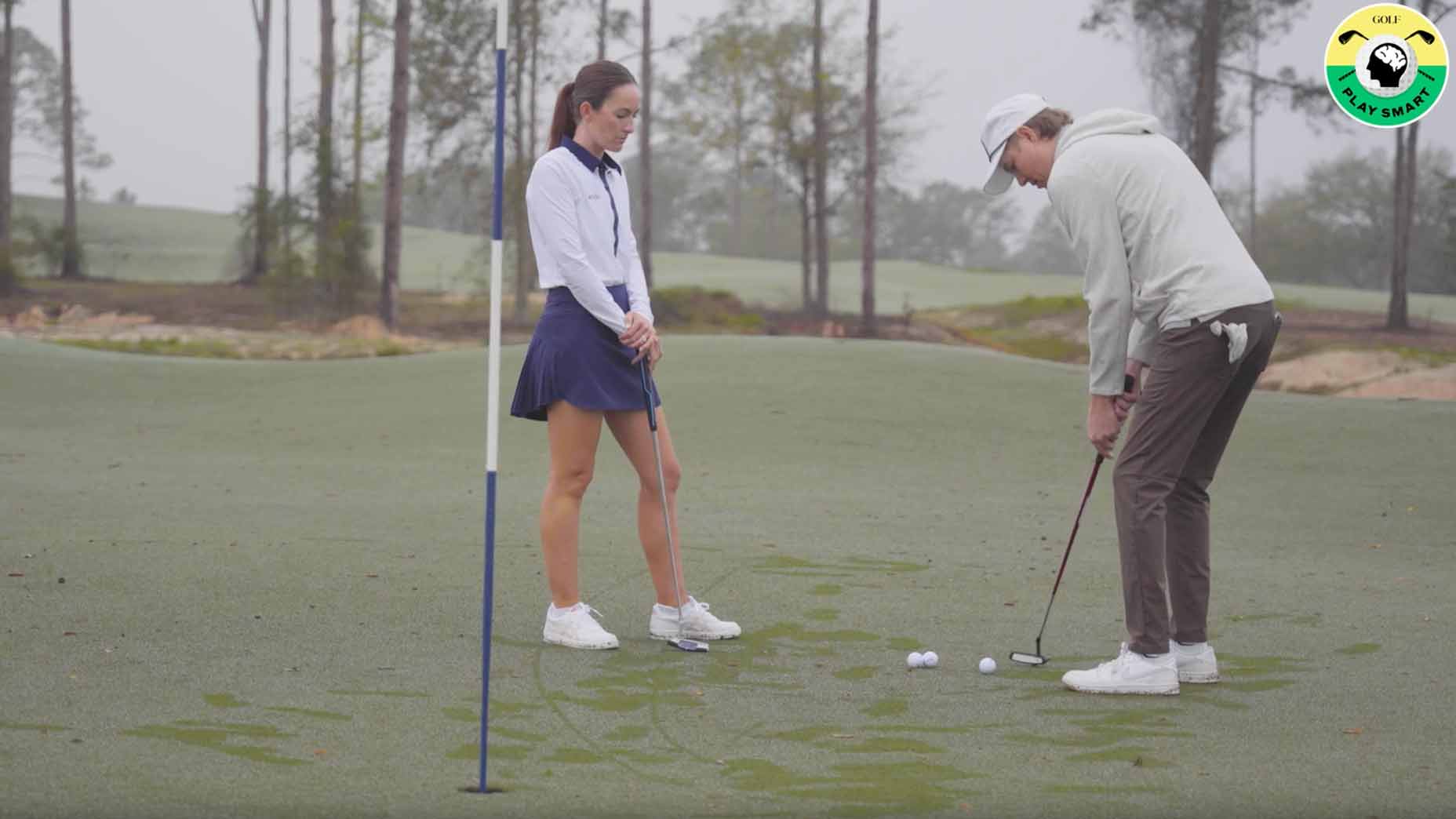Golf Logo
The easy 2-step method for reading tricky Bermuda greens
SHARE
- Share on Facebook
- Share on Twitter
- Share by Email
Revealed! Top 100 Courses You Can Play for 2024-25
Browse ranking here
You must do these two things when reading Bermuda greens.
GOLF.com
Ed. Note: This edition of Play Smart was published in partnership with XXIO.
If you’ve never played on Bermuda grass greens, putting on them is quite a foreign experience. The ball never reacts the way you expect, and it can have you pulling out your hair by the time the round is over.
The reason Bermuda greens are so tricky is that you not only have to worry about the slope on your putts, but the grain — i.e. direction the grass is growing — as well.
Bermuda grass is most often seen on courses in places with warmer climates, so if you’re a northerner, you might not have much experience playing on the tricky surface. If you plan on traveling to a course that has Bermuda grass greens, though, it’d serve you well to familiarize yourself with the nuances of the grass before you get there so you can play your best golf.
XXIO ambassador Nathalie Sheehan, who teaches at Pelican Golf Club in Florida, knows a thing or two about how to read Bermuda grass greens, and in this edition of Play Smart, she shared with us a few of her secrets. Check them out below.
One of the easiest ways to read the grain on Bermuda greens is by checking the color of the grass. When the blades are growing away from you (making putts faster) the green will appear light and shiny. But when the grain is growing toward you, the grass will look darker.
“Darker grass is going to be into the grain,” Sheehan says. “Those blades of grass are bent over toward you — they’re growing toward you. So that golf ball is going to have a harder time. It’s fighting those blades of grass as it’s going toward the darker grass, so it’s going to be slower.”

Another key for reading the grain is to walk up to the cup and inspect the grass around the hole. Typically, one edge of the cup will look a little more worn or banged up than the rest. This is the direction the grain is growing and the ball will usually break that direction once it gets near the cup.
“You’re going to picture that as a funnel,” Sheehan says. “Everything around the hole wants to funnel into the brown spot.”
If you can keep these two keys in mind when on Bermuda greens, you’ll have a much easier time reading your putts and will make many more birdies. Give it a shot.

Golf.com Editor
Zephyr Melton is an assistant editor for GOLF.com where he spends his days blogging, producing and editing. Prior to joining the team at GOLF, he attended the University of Texas followed by stops with the Texas Golf Association, Team USA, the Green Bay Packers and the PGA Tour. He assists on all things instruction and covers amateur and women’s golf. He can be reached at zephyr_melton@golf.com.